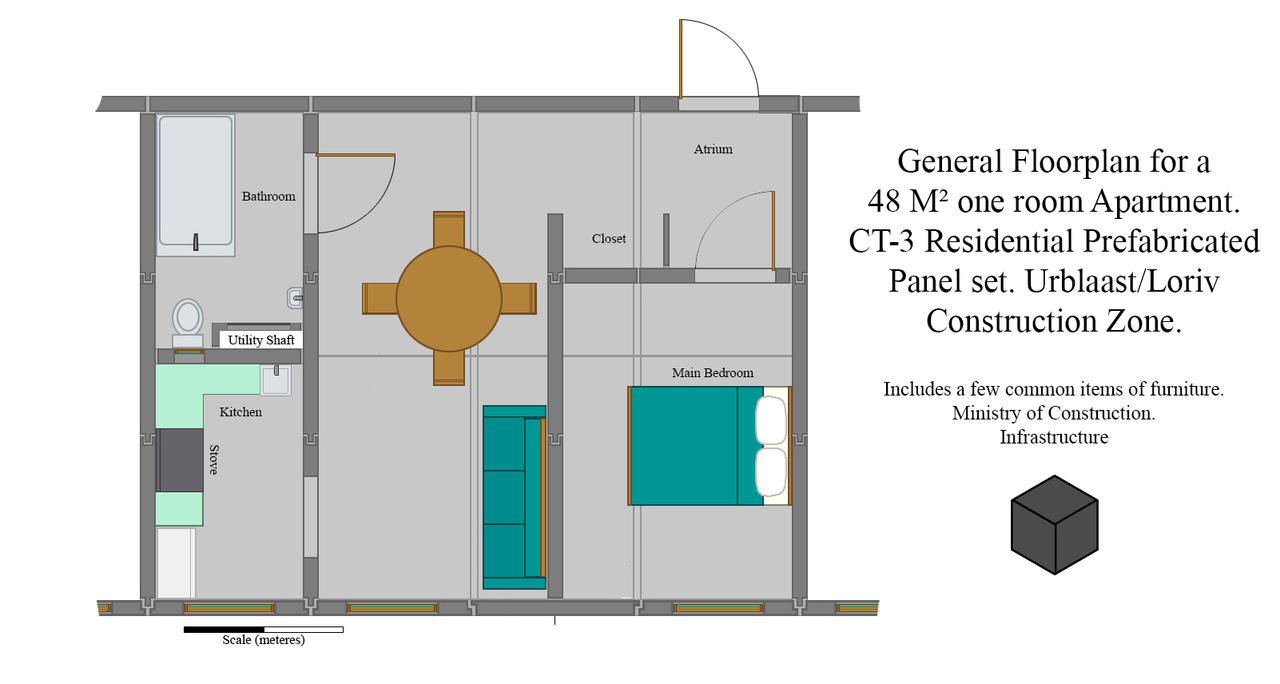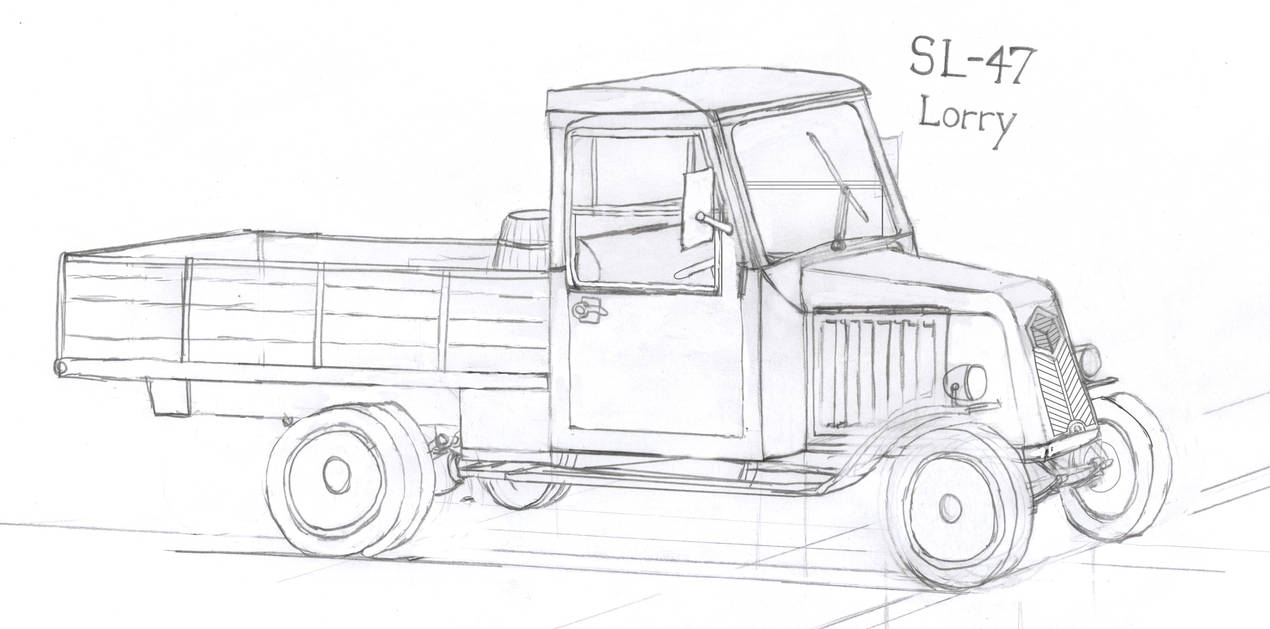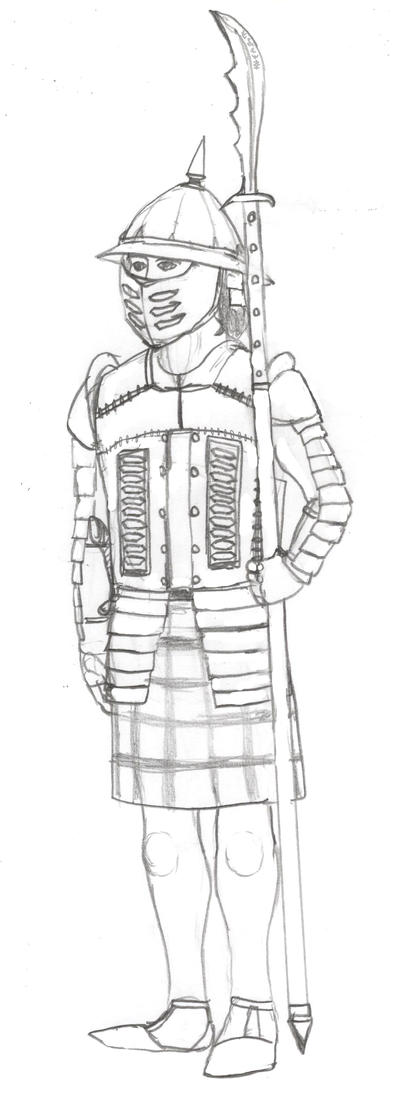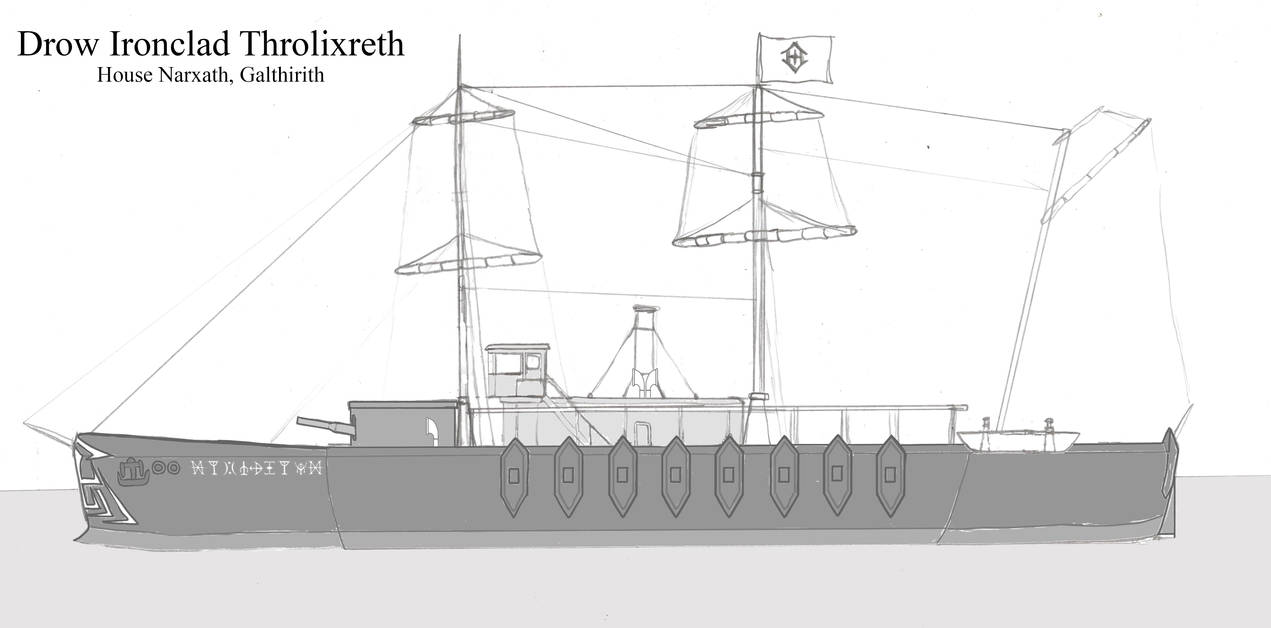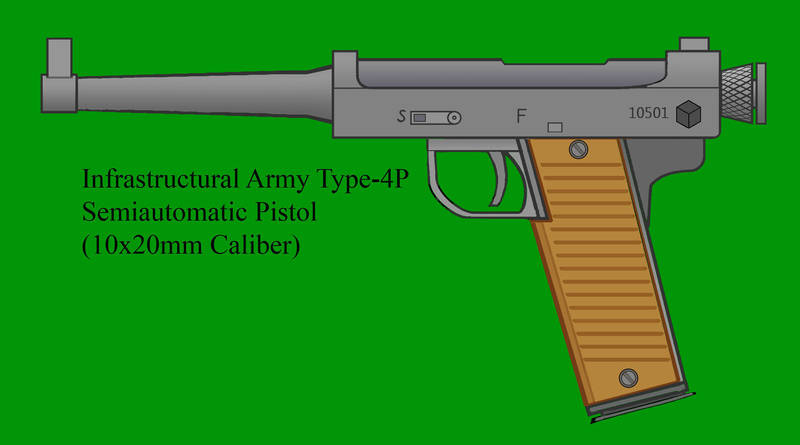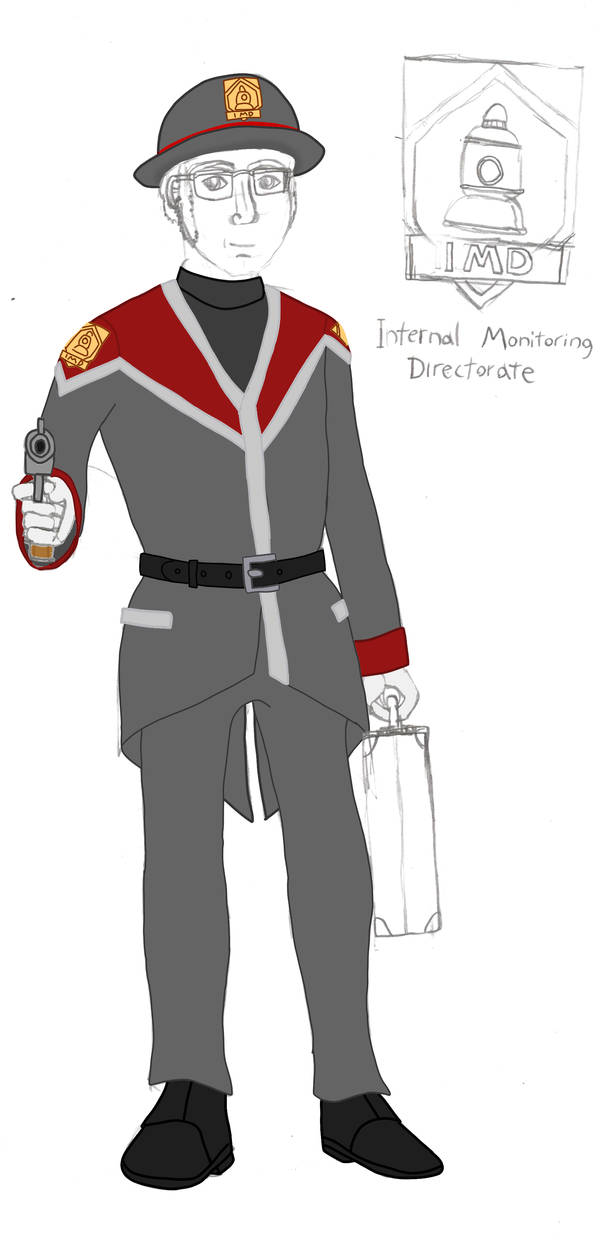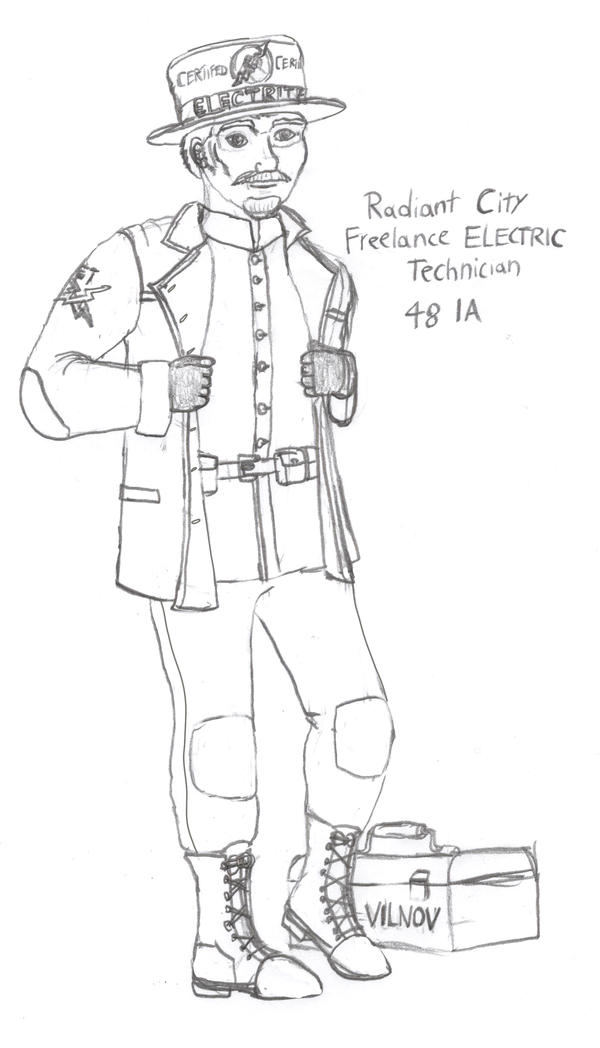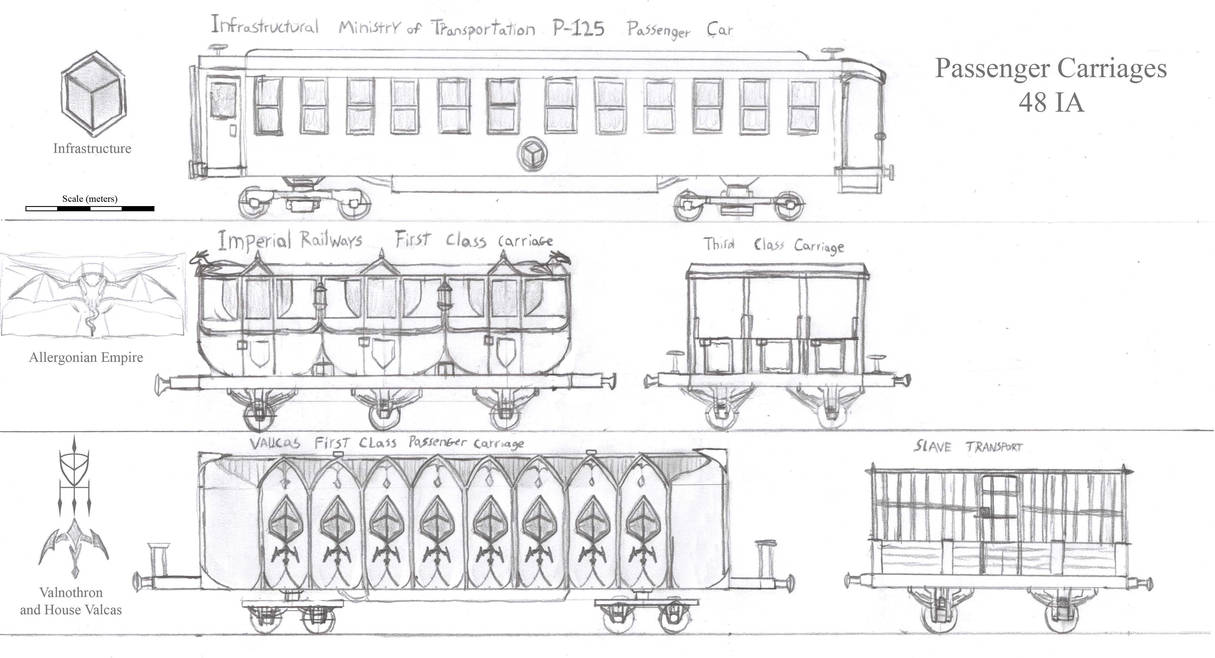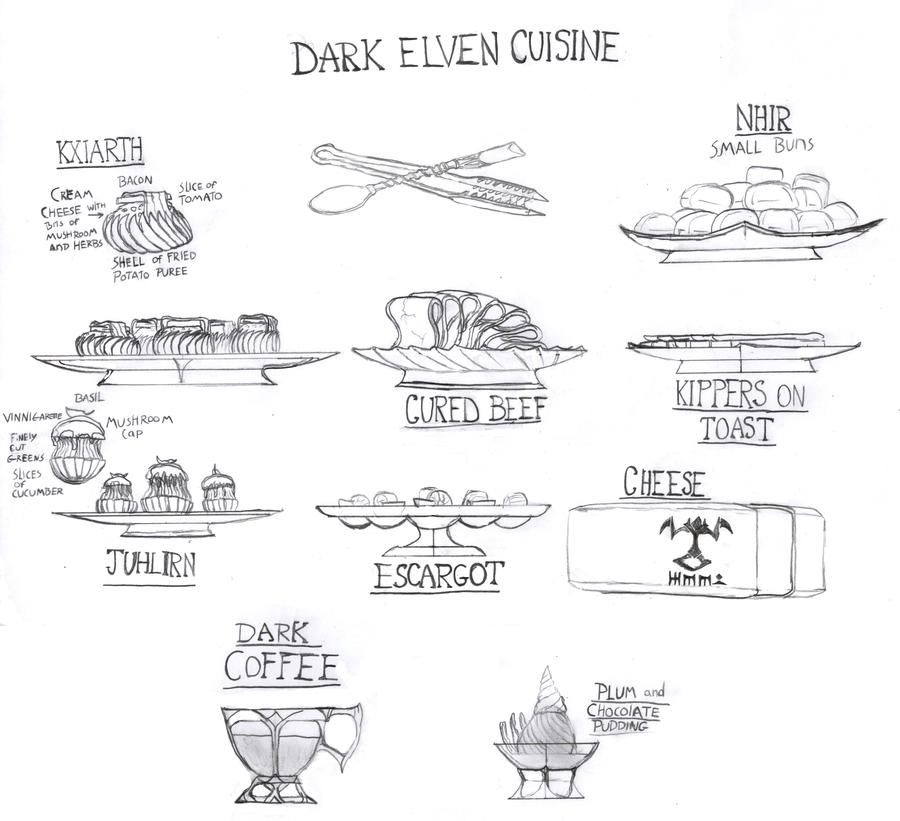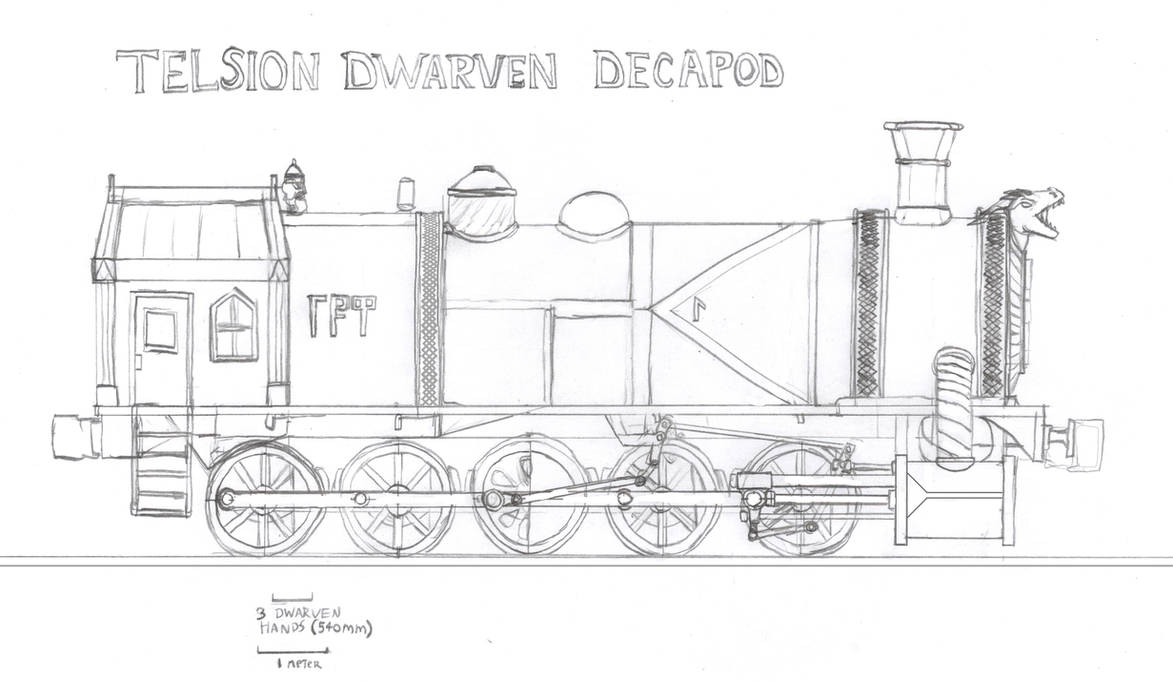(Noldolia, Kingdom of Torion, Summer 47 IA)
Seven weeks after the official foundation of The Radiant City a package was delivered to the the Torionese port city of Noldolia. It required a modified Progress class freighter to deliver and a pair of heavy duty cranes to unload at a special dock. Special care was made to lower three massive 102 tonne steel objects down safely onto a set of rails laid in large part for such deliveries, as well a smaller simpler companion. After a set of inspections by a crew of Infrastructural Ministry of Transportation mechanics and technicians followed by a few Torionese artificers and engineers the tenders were filled with coal and water and attached to their engines, which were fired up for the first time. One by one they chugged along a short course at a modest 10kph for a brief spell over the rest of the day before being sent off to a depot. Three days latter after some more inspection on a warm morning they would be brought out for a special ceremony.
Bureaucrat Grade-5 Nikita Gamow watched as the locomotive made it's way down the railway and came to a smooth stop from an elevated stage on a chair with a small box on his lap. He'd been stationed here for the past seven years and unlike his siblings he was not much much of a trainspotter, but he knew they were Dalatyr Locomotive Factory class G6 general purpose units from his reports. They were painted gold with purple trimming: a scheme who's primary colour made him think of the Ministry of Transportation's construction and maintenance fleet back home, though those thoughts would be impolite to voice. The real reason for the scheme was obvious in the fluttering Torionese flags and banners fluttering in the breeze as a crowd stirred about. He wished this could be done in Noldolia Station, the blueprints and sketches were beautiful. But that was still under construction, so an outdoor ceremony would have to do even as the temperatures gradually rose in the summer sun.
To his relief, trumpets announced the arrival of Marquess Federico de Catelon, 27th Lord of Noldolia and and a few members of his court. He gave a speech which was flowery in it's prose but short and to the point. The same could not be said about Magister* de Viguela who follow it up with a ten minute sermon on the Gods of the Forge, the gifts of wisdom they have bequeathed to us mere mortals and the responsibility to use them wisely with allusions to several of his preferred theologians. He'd expected it, as did the Marquess and fellow counsellors who had similar opinions of the old windbag.
Regardless once that was done, his part of the ceremony was fairly simple. He got to his feet, walked to the Marquis and was announced with fanfare. He approached to city-lord and gave a respectful bow. "Marquess de Catelon." He said politely, though his Torionese elocution was still far from perfect. "On behalf of the Central Committee of Infrastructure, it is my honour to transfer ownership of three locomotives to the Royal Torionese Railway. The
EL-01 Amicus,
EL-02 Fraternis and
EL-03 Societas." He opened the box and made a show of handing over three golden keys, each one bearing the name of the locomotives delivered.
"On behalf of my King, it is my pleasure to accept." He offered a hand to the Bureaucrat and shook as a photograph was taken. With this done there was applause from the crowd.
"Your Lordship. May I offer you a tour?" Nikita asked as the two of them left the stage.
"I'd be delighted." The Marquess replied. There was little doubt he would accept. It was part of the pageantry of the day. Soon enough they were on the gravel nearby the vehicle along with Engineer Skirbekov.
"You see your Lordship, the class G6 locomotive is what we call a 2-8-2, two unpowered leading wheels, four powered wheels hooked up to the pistons in the midddle and two unpowered trailing wheels in the back." He continued from there at a steady pace, the speech well practice but still pretty surface level. Skirbekov could answer any technical questions. It was as much for the crowd as for the Marquess in any case.
In general, early Torionese railway development had been hard and slow. By 43 IA there were three disconnected short lines in operation operated by two dwarf-holds and the Tivro Foundry, each less than 40km long and set to it's own gauge, with two more under construction. It came as something of a suprise when the Infrastructural Embassy offered King Ailtor II proposal to build and outfit a 122km line for the Crown from Noldolia to Bromos in exchange for 800,000 Trono and a 10% share of it's dividends for 25 years. The King agreed and after surveying and deal-making with local nobles work proper began early in 45 IA, aided by the arrival of three surplus
Class-6 Locomotives. The line was finished in the spring of 46 IA and shortly afterwards additional contracts would be secured for additional main lines, branch lines and extensions, along with the rolling stock. In praticular, a contract to the capital city Tuliso was enough to get King Ailtor to splurge, spending 180,000 Trono on a set of ten new locomotives for express service and to pull the Royal Train. Top of the line prime movers that were powerful, fast, efficient and prestigious.
Parlially this program of rail development was done to pay off the debts accrued during to the Escort War. Partially this was to keep a major source of oil on friendly terms. But a factor often overlooked in this policy of rail development lay in the tracks themselves, or rather between them. The Kingdom of Torion would have one of the best rail networks on the planet, but one set to a Gauge of 1.5 meters. The King would continue to commission additional locomotives for the Royal Torionese Railway, it would remain a market for surplus Infrastructural rolling stock and their spare parts and it would provide a useful lever in decades to come.
*
A regional official in the Order of Keepers, managing Order affairs from a Temple-Archive.
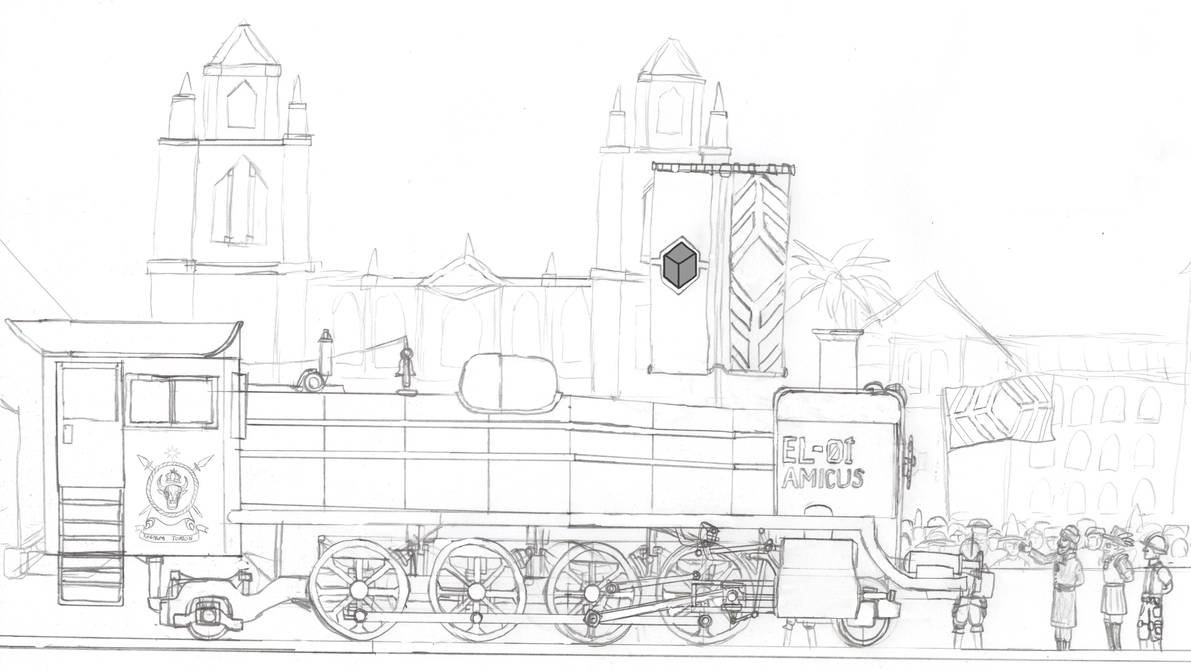 (Dalatyr, Summer 47 IA)
(Dalatyr, Summer 47 IA)
The doors to the great hall were thrown open and a trio of axe wielding warriors ran in behind a young woman.
"Going so soon, Tatiana..." the leader boasted with a mocking tone, a grin on his face.
Tatiana's eye's narrowed. "Akim the Axe-Lord. I thought something smelled."
"Strong Men has a strong Musk little bird. One you'll grow to love in time."
"Watch it, one centimetre closer and you'll get a injection of hot lead." Tatiana's head hovered over her holster. "Besides, this town's aint yours anymore. Drop the axes and Major Marikov might show you mercy."
"No no my dear." Akim said with slow relish. "Marikov won't save you now. The Necromancer Nymerg has completed his spell! A thousand skeleton warriors have risen from the Mornfull Mounds and have taken up arms in my name." He raised his axe above his head. "This town is mine and shall stay mine forever and there's nothing your Great Machine can do to stop me! Ahahaha!" His minions laughed with him.
"...and Cut!" A clear voice carried over the set. With command the cameramen ceased cranking and the warriors, 'Akim' and 'Tatiana' relaxed.
"How was this take Sergei?" Actress Irina Verisleva asked with a bit of impatience, this was the sixth shoot for this scene and there were still thirty one more to do.
"I think that one's a keeper." Director Sergei Zhelezivik replied. "We'll shoot the escape scene after lunch."
"Not a moment to soon." Said Pawel Pysanka said as he handed his shield and paper mache skull-axe to a stagehand. "Thought we'd be on this all day."
"Don't blame me." Irina said in a light but weary way as she made her way to the Lunch Table for a sandwich and a cup of tea. "Or Igor, Ilya or yourself. Blame that damn fool manning the microphone pole."
"Don't be too hard on him." Pawel said calmy. "He's still learning, even if he could and should be doing so faster."
"Yeah." Snorted Ilya. In the distance, the Grip in question grumbled.
Night of the Necromancer was Infrastructure's third film with sound shot entirely without the aide of Fabricated equipment. A 22 minute long adventure set in the Wars of Unification. Even without the sound, it was still an ambitious production being three times longer than the average one-reel short that had been playing in fairs and cinemas for the past nine years and would be ready with the onset of winter. Operating mostly out of a couple old Armoury warehouses (leaving aside out-of-studio shoots) and with only about 220 employees in total from actors to caterers the Infrastructural Film Industry was in the summer of 47 IA was at this stage still nascent and it's works had been dismissed by foreigners as (in the words of Venoan merchant and theatre aficionado Ettori Vinchusci in 46 IA) as being 'a novel magic lantern show used to display eerily silent village fair fluff'. Even so, it's early products were never the less popular and the Ministry of Communications had big plans for this operation going forward.
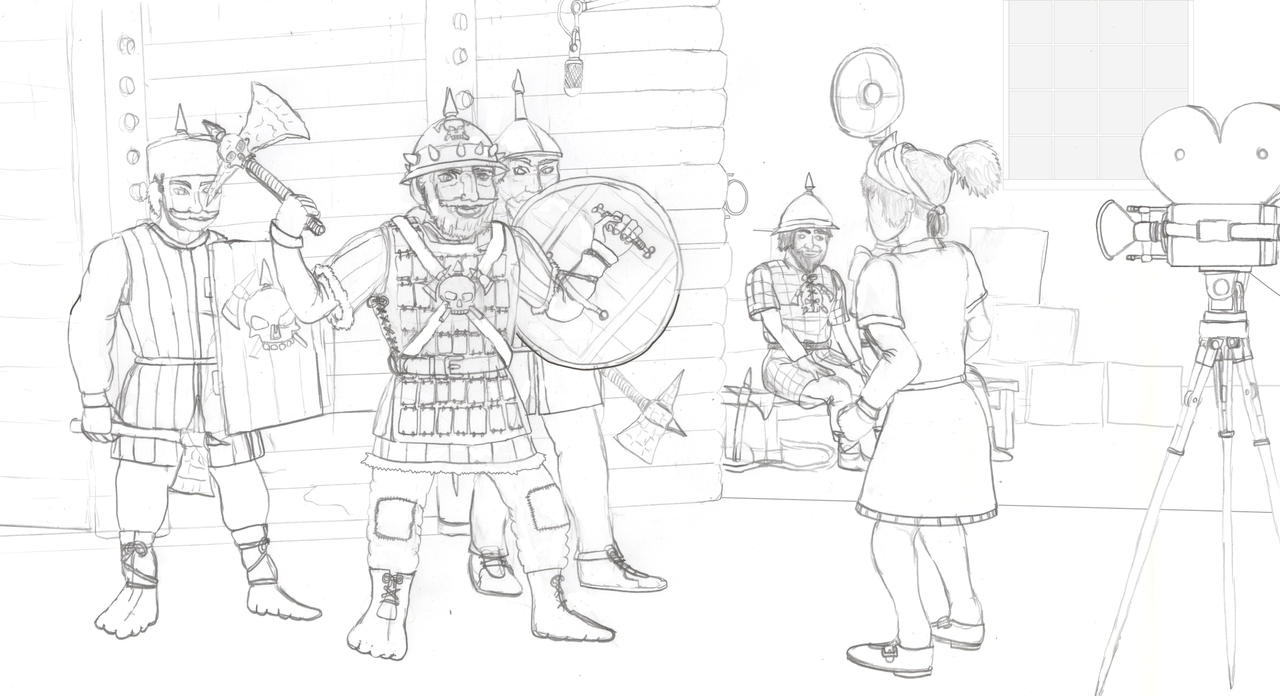 (The Radiant City, Late Summer 47 IA)
(The Radiant City, Late Summer 47 IA)
On a cool morning a Ministry of Distribution SL-47 with an enclosed back made it's way down the streets of The Radiant City. There was not a lot of traffic yet, which was probably for the best. It accelerated quickly, stopped suddenly, swayed a bit and was a bit jerky in it's turns. Never the less the van came to a safe stop in Ivonova District and from it a young man and woman disembarked.
"Alright Sasha. How bad was that?" The man said reluctantly as he got to his feet.
Sasha put on grin as she made her way back. "Kirill you didn't miss any stop signs or lights or hit anything, even if you did park on the wrong side of the road. Still you still passed your road test, everything else is practice." She said as she unlocked the back of the van. "And the Bread's fine."
"Well I hope so, for everyone's sake." Kirill said as he took out a couple of trays, Sasha followed behind him. As he went he inhaled through his nose. "And that's a beautiful smell."
"Just don't drool on the loafs." Sasha jibed. Soon they'd walked into a MoD grocery store and dropped off their farinaceous cargo to the shopkeeper. They made ten more trips before having him sign off for the delivery. That done, the two got back into the van and made their way off again. This time at a slower pace.
Over the last nine months, ULAF had produced more than 12,000 SL-47s either as lorries and chassis for special fitting. More than all the the previous Infrastructural lorries, omnibuses, tractors, bulldozers, battlesteamers and other free-range steam and IC vehicles. Deploying such a fleet had massive complications in of itself, none the least of which was training of personnel, ranging from mechanics to drivers. Training programs were in place to get people up to speed, but novice drivers needed experienced drivers to learn the ropes. Early on a lot of which happened in and around The Radiant City itself for reasons both practical and propagandist, even though there were accidents. To minimize this, there were people like Sasha Plotnik. She'd been a MoD driver for the last five years and a big part of her job nowadays was helping newbies through the first few weeks on the job and nip bad habits in the bud. Kirill was not the worst she dealt with, but there was still massive room for improvement especially as more and more lorries and vans were finding their way onto the road.
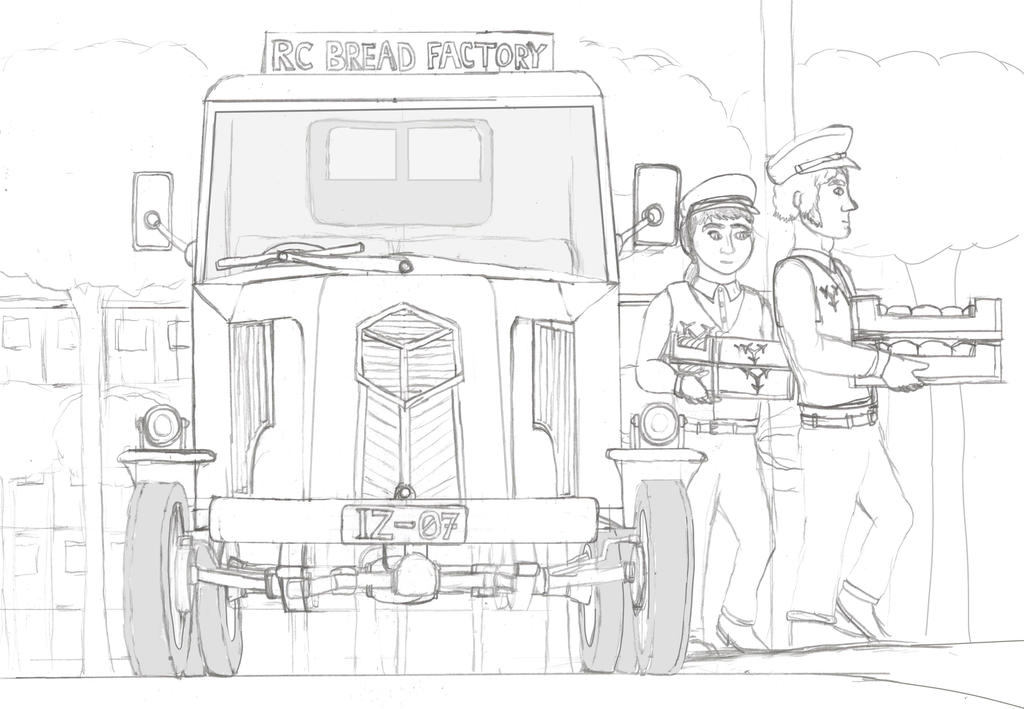 (Daagsgrad, Autumn 47 IA)
(Daagsgrad, Autumn 47 IA)
On a cool night the Daagsgrad drydocks was full of sound and activity. There was the familiar ringing of metal, winding of cranes and background chatter of yard-hands hard at work. Though in three of them the ringing of hammers was now much diminished, as was the smell of coalsmoke from rivet buckets. In it's place there was the smell of molten steel and crackling sound of high temperature jets of fire and flying sparks. As she made her inspection
Bureaucrat Grade-4 Yuna Igorova took note of another addition, the doubled up rubber pipes which snaked their way across the unfinished hull. These tubes lead from high pressure tanks to torches weild by masked workers who used them to weld hull plates, bulkheads, girders and other elements together. Their speed was uneven, with some being a bit hesitant with regular stops, but even so it was quicker than riveting.
Oxy-acetylene welding was still a new thing and she'd seen enough reports of burns to know that they had their downsides. Training hundreds of workers in their use was a complicated affair in of itself. Even so, it was heartening to see the new tools put to good use. This would be the forth ship that the Daagsgrad shipyards built with welded construction. Beforehand they'd built a
Hubtown class freighter as a dry run and that had preformed admirably in it's sea trials. This was a more ambitious program.
Like most people, she'd read about The Radiant City and it's factories in the newspapers. Similarly the Shipyard received a couple Lorries over the last five months. Their had been a lot of talk about them, a lot of which was enthusiastic. She agreed that it was a great accomplishment and saw the potential that this had. On the other hand, she'd felt a bit of envy and a bit more longing. Two decades ago, building the first wave of metal hulled steamship was the big glamorous project. During the Escort War naval construction was propagandized as the cutting edge against the Drow Slavers. Of course, both of these pushes involved a lot of hard work and long hours and undoubtedly there were plenty of weary workers and beleaguered bureaucrats involved in ULAF's construction and operation. In twenty years something would be the new big thing that everyone was talking about. Especially since they were doing some great new work here and now.
All those Lorries burned gasoline which was made from Petrolium. Petrolium came from the Colony or from foreign sources like Torion. Either way, it needed to be shipped in using
Bottle or
Cask class Tankers, which her people had built. Now they could build them quicker and cheaper than before with welding. But it was not just freighters and tankers that were to be used here. While the newspapers and radio went on about the new Lorries and recruitment drives for what would become The Radiant City several orders were quietly given to the Shipyards of Daagsgrad and Borogskov: new warships.
Since the end of the Escort War Daagsgrad had built a single slightly enlarged
Destroyer and broke up six other warships for scrap. It was sad to see ships she'd built be taken apart for scrap, leaving aside that the Dark Elves were still out their. She'd read the memos about the budget, but it still seemed to be such a waste. Now finally they received orders for a new generation of Destroyers and Hunters. They would not have to work at the breakneck pace of wartime production, but with new tools such as Acetylene Torches they could build better and strong than ever before. Ships that would make those slaving bastards think twice before causing trouble in Infrastructure again so others would not have to go through what she did when she lost Inna.
She stopped by a set of workers hard at work on a section of hull and the progress they were making, taking note of everything. She was no Engineer, but she knew enough to see that things were proceeding reasonably smoothly. "Very Good" she said softly. Part of her chided her for this. After all you did not want to distract people as they were working with tools that could melt steel. Fortunately they kept to their job. She continued on her course.
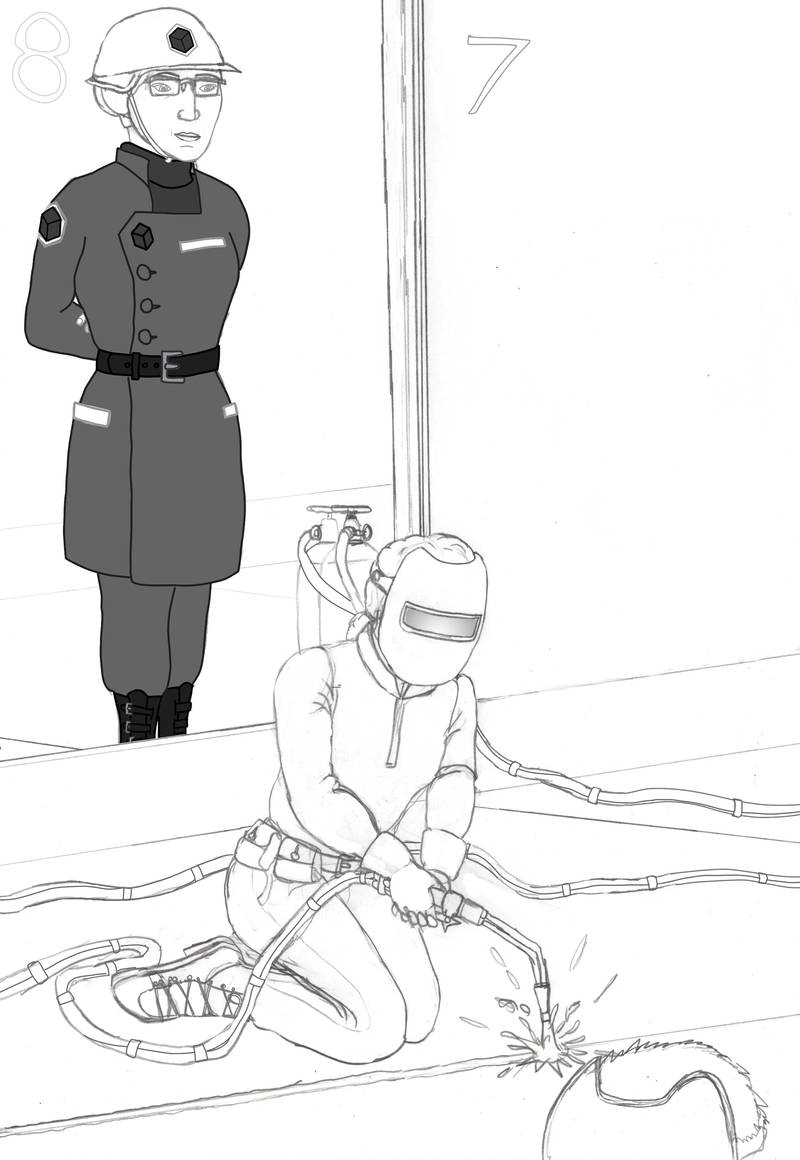 (Daagsgrad, Autumn 47 IA)
(Daagsgrad, Autumn 47 IA)
Daagsgrad autumns had short days and were as a rule cool and foggy. Despite the weather the economic activities of the city continued. People went about buying and selling, did errands, visiting friends, family and lovers, doing business, went on strolls or hung out. In the weather a bearded man in a dark wool coat, scarf and a soft grey hat was nothing to comment on by casual inspection. If one monitored his course, they'd note that it was somewhat erratic, turning at corners and looping back a couple of times through the a collection of winding alleys. But sometimes people liked to take the roads less travelled and wander a bit. The buildings in this area were among the first the Infrastructurals had built and had seem some serious damage during the siege and rebellion. Even so, they did have a lot of odd nooks and crannies for those who did not want to be seen.
After passing a corner, the man stood still and checked what before and after him. He checked a pocket watch for the time and waited for six minutes. Then a figure rounded a corner and came out of the mist. A man with a moustache and a travel bag.
"Excuse me, do you know a good bar around here?" The Newcomer challenged in a familiar voice.
"I'd recommend Urlan's. It's not far." This, in a very private and transient lexicon, meant that he was not under duress and he had something substantial to talk about.
"Well could you tell me the way?" The newcomer replied.
"Certainly." The two of them approached in the gloom. As the man did so, he took off his hat, flipped it over and turned it inside out, revealing a darker interior before replacing it on his head.
"So...what do you have?" Salt said as he peeled off the moustache and slipped it up his sleeve. To the bearded man in the hat he was known only as Salt.
"Only this." The breaded man reached into his coat and produced a pipe mechanism. "One of the welding torches."
"May I?" Salt said expectantly. The first man offered the item to the newcomer who inspected it carefully. "Intriguing, if a bit simple."
"As I told you they're basically like an oil lamp, albeit a high pressure one burning gases."
"I remember. Just a comparison against general expectations of Infrastructural Machinery." Salt the item into his bag. "Nor is it a bad thing."
"And my payment? Getting that out of the yard and past the guards was not easy."
"Ten Kilo through the usual channels as agreed." Over the next couple months, his cleaning lady would leave an envelope behind his nightstand after some of her visits. Five envelopes in total with two thousand credits each, nearly double his annual salary. "We'd offer another ten for samples of that new gas, 'acetylene' I believe it's called?"
"What about oxygen?"
"That my superiors know about." That was all the information Salt had received on oxygen and all he cared to know about it. Operational security was paramount.
"They keep it in these tanks. High pressure things, the smallest of which weigh more than 20 kilos. You can't just keep them hidden in your jacket."
"Very well. My superiors shall work on the means going forward. This has been most productive. Good day." With that, Salt made his way forward and continued through the winding alleys. The bearded man shook his head and eventually made his way home.
Magnus Norsisleb was not a fighter. This was not say that he could not fight if he had to, but he believed firmly that the best way to win a fight was, if possible, avoid it. Which did not mean that he did not have opinions. When the Dark Elves landed, he'd got train tickets to Borogskov for himself, his wife and two kids and he made plans to flee further. When he'd read about the damn fool uprising, he was furious. A bunch of damn fools who were deluded in thinking that the old slavemongers were anything other than petty spiteful parasites tearing up his city because they figured they could fill their shoes and reign atop the rubble pile. Not that he loved Infrastructure, seeing it as a blunt self-righteous ravening beast for all it's clever toys. An attitude which persisted even after he got a job in the shipyards after the siege. To Magnus what mattered in this world was himself, family and friends.
Six years ago he had some money troubles from a few bets and he'd met Salt. He gave him an offer: 750 credits for some photographs of some of the new ships under construction, enough to cover his debts with a bit to spare for himself. He'd agreed, did the job and resolved an embarrassing situation without his employer or wife knowing. Over the next few years he'd done more of the same. He'd invested some and spent the rest and generally lived better than his neighbours. The welding torch was the first thing he'd stolen from the shipyards besides old paperwork, but as far as he could see there were plenty of the things and there was probably a factory in Dalatyr or that Radiant City making hundreds of them a day.
As for Salt, he knew that he was working for another power who wanted Infrastructural shipbuilding secrets and left it at that. Salt did not say more and Magnus did not pry. It was a not a chatty relationship. Shortly after their parting, Salt called up his other connections and the welding torch and a bundle of miscellaneous reports began a circuitious but secure journey to the research workshops of House Valcas.
 (Administrative District, Daagsgrad, Autumn 47 IA)
(Administrative District, Daagsgrad, Autumn 47 IA)
Papers rustled, typewriters clicked and rang, pencils scribbled, the radiators occasionally thumped and there was a faint murmur of conversation. This was the constant background noise for Maja Tomenko's office as she poured over her usual pile of paperwork. In general these were banal: copies of employee timekeeping records and receiving records made up the bulk of it. She was more interested in the marginalia that had been added. Most of which pointed out irregularities in accounting or anomalies, with most of them being fairly mundane. Only in the context of various written procurement reports and Enforcement inquiries could they be parsed out, and even then it was imperfect. Fairly regularly, she scribbled an addendum onto an older note relating to a potential lead which could either strengthen, weaken or invalidate it. At the end of the day, she'd file her notes and submit a list of the strongest leads to her staff for future investigation.
"Inspector Tomenko?" A voice said, drawing her out of her little world.
"Hey Ulf." She turned to face him with a grin. "Good news or bad?"
"That's depends on your perspective, ma'am." Ulf said formally with a folder in hand. "But we have managed to find a hard connection between Daisy, Rose and Bluebell."
"And what of the rest of the bouquet?" She'd been the one to suggest floral code-names for a number of suspects.
"Lily, Tulip, Pansy, Daffodil, Marigold, Orchid and Bluebell are not involved with this connection so far as we can tell."
"Oh Poot." She spat the mock profanity. "Still it makes sense, they have been pretty smart about this so far. May I?"
"Of course." Ulf said as he handed the folder over.
"Thank you." Maja said sweetly as she received it and opened it up. In short, it contained reports on one Roskara Shelepov, a fifty three year old cleaning lady who fairly regularly worked for subjects Daisy, Rose and Bluebell, along with a few other clients. Normally she'd charged 1.2 credits an hour, pretty much the going rate for basic domestic cleaning services. Such an income was modest, but Even so she'd owned a fairly substantial house in the Southeastern Dev-Zone. She apparently had some investments in rental properties and dividends would cover some of the discrepancies, but that begged the question as to where she got the capital. Her family was not rich, especially given her father's debts and her brother had been a rebel who died in the Battle of Daagsgrad. This was not unusual in of itself and she had a solid alibi for her ignorance of that plot given that the core Rebels were almost exclusively male and she'd spent the siege in a friends' basement well away from the fighting. But that did not rule out anti-Infrastructural sympathies.
Over the last four decades, workshops to the west had tried with varying degrees of success to make duplicates and derivatives of Infrastructural weaponry, tools and technology. You could understand the desire and their were some benefits to it, even though they got much of the raw info to do so through traitors, abductors, extortionists and thieves to try to prop up their own faltering feudal (or worse) Societal Machinery. Their attempts at probing the Coldlands for their secrets ranged from comedically incompetent to those both well funded and fiendishly subtle. Local Enforcement and the
IBME could and would catch individuals engaged in industrial espionage, but against the more serious ventures and State level actors you needed something more. The pertinent data was out there if you knew where to look and how to find it. Many of her colleagues were involved with informants or interrogation, but Maja mostly worked with paperwork and accounting finding it just as productive.
Few people who knew her as a child would think that Maja would take up her career. The petite daughter of a bakery manager and a secretary who alternated between shy and bubbly. Her interest in jigsaws and crosswords were the earliest signs of this, as was a fondness for cards. She attended Administrative Prep, but she did not go down the Bureaucratic path or settle into a cozy clerk's posting. Instead she signed up for the Internal Monitoring Directorate, which was definitely a demanding job with a lot of responsibilities, but the puzzles it offered were formidable indeed. And the professional and financial activities of Ms Shelepov was a piece around which others would fall into place.
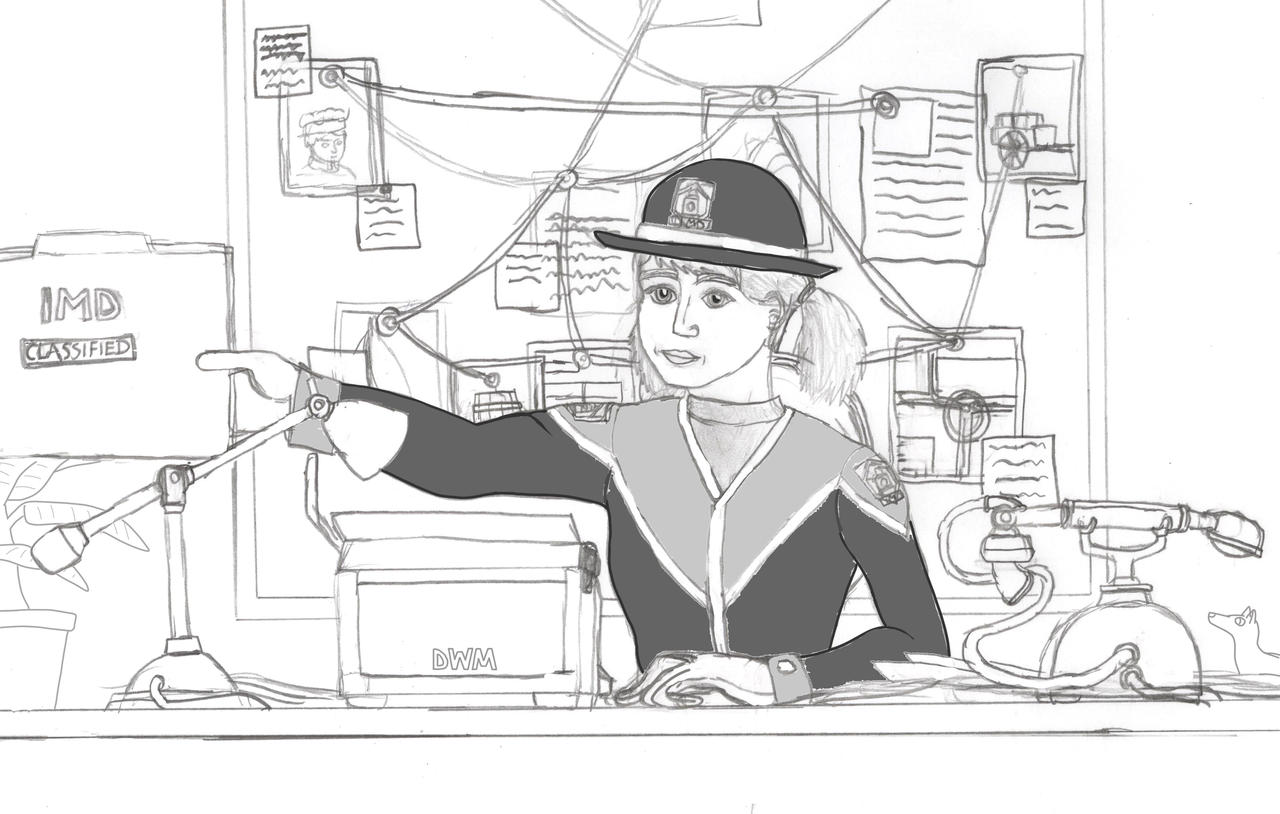 (Daagsgrad, Autumn 47 IA)
(Daagsgrad, Autumn 47 IA)
On a simple bed in a small bed above a Daagsgrad linen shop there slept a man who'd for the last eight years had used seven different names, changing them as easily as other people changed socks. None of them were the name his parents gave, a cherished relic he kept lodged in his memory. He had a couple for day-to-day living, one he used when he went out looking for entertainment and a couple he used for work. His work involved erratic hours and it was not unusual for him to spend the day tucked beneath it's sheets, as he did on a cool afternoon until he was rudely and abruptly roused by frantic activity.
"Get up! Now!" One of his roommates said in Allergonian as he shook his shoulder. The sleeper opened his eyes. "A Lorry pulled up full of Mobes* and they're coming this way."
"Shit. SHIT!" The Sleeper said as he peeled himself out the sheets. "Bar the door, burn what you can and get moving."
"Already being done, Bread's on the Door." The Roommate had a pile of folios and notes in his right arm and proceeded to stuff them into the small iron stove as fast as he could, as well as having a revolver in his pocket. How much use that would be was not worth dwelling on.
The Sleeper threw on a pair of pants, shoes, jacket, a cone shaped hat and collected his emergency pack in a few short seconds. It was a small leather folio with five hundred credits, eight marks, some forged documents for a yet-unused alias, a pair of spectacles and a false beard and a small booklet of contacts. As soon as he was done there was hammering on the Door.
"Infrastructural Bureau of Mobilized Enforcement!" A muffled cry came from the doorway. "We have a Search Warrant! Open up in the Name of the Law!"
"Stay safe." He said just before he slipped out a window, never expecting to see any of his three fellow lodgers again. Already Nails had left, hopefully Bread and Candle could make their escape. He clambered over the rooftops, keeping crouched as he did so for three buildings before descending to the ground by a cast iron pipe and a fire escape. He thought he heard gunfire, though no challenges or threats. He threaded his way through and prepared to be just another pedestrian. With a little care he'd get out of the city and then either get to another Safehouse for a few months and go to ground or get out of the country.
Then to his shock and horror two uniformed figures came out to meet him. One was a lean Mobe Corporal carrying a shotgun and a truncheon. The other was a petite woman with girlish pair of ponytails, who was far more frightening. She raised a gloved finger.
"Hold it there." She said with a slight tinge of giddiness "You look a lot like someone I was looking for."
"Who would that be, Enforcer?" He said trying to give just the right amount of concern that an innocent bystander would given when confronted by Enforcement on a warpath.
"Don't know his name, silly fellow goes by Salt. Also there's no way out of that alley, at least horizontally."
Salt tensed to make a dash. This was beyond bad and he did not even have a knife.
"Now now." She said as she raised a gloved finger and drew a sleek slim pistol. "We're just going to have a little chat with you and your friends. The Corporal's will just help you get back to our office." The Mobe advanced on him quickly, grabbed him before he could bolt and in a few quick motions had Salt in handcuffs.
In the end they'd collected three of four members of this cell alive, the forth was killed in a shoot out. An Junior-Enforcer did suffer a flesh wound to the leg, but by all accounts he'd make a full recovery. For the last few days she'd fretted about this outing. She did have combat training and the Mobes were good at what they did but even so most of her work was done behind a desk. A certain degree of field-work was required of Internal Monitoring Directorate officers, though most of that was fairly low key stuff following up on leads, working with contacts and interviews with figures. This was a raid against a key node in a well funded Industrial espionage ring which was suspected of having some serious firepower and apparently did have a shotgun and two revolvers. A lot could have gone wrong even with prep. Even so, it was her case and Commissioner Vrubel felt that she should personally oversee one of the day's three raids. Everything went smoothly and she was glad of that, even though she hoped to never repeat it.
The next few weeks would be busy for Maja as interrogation and written documentation brought in a flood of new information. This lead to more arrests and by extension more info to process. Soon enough, the IBME and IMD had rolled up most of Valcas' assets around the The Yards as well as some of a few other operations. A few of their agents (mostly human Proxies) went to ground or otherwise escaped, but their operations would take years to rebuild. As for Salt and his surviving colleagues, they would be put to productive use as Detentional Labourers in the Petrolium Colony.
*
Slang term for the IBME.
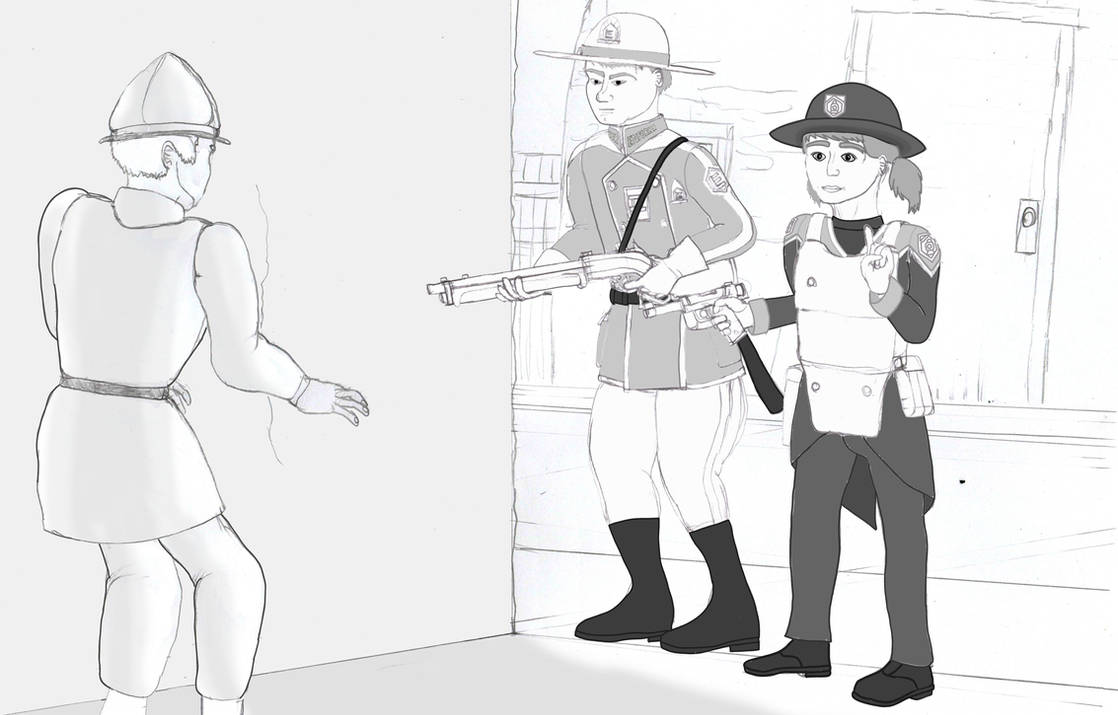 (Serene Republic of Venoa, Late Autumn 47 IA)
(Serene Republic of Venoa, Late Autumn 47 IA)
A pen ran over parchment leaving behind a neat signature, punctuated with a final strike. The documented was rotated 180 degrees on a desktop and for a moment inspected, just for a final conformation and an official stamp.
"And with that the last consignment has been officially received Enlightened Bureaucrat."
Vintenzio Di'Hanseti said "And I must say that this comes as a relief to both of us given bond obligations."
"Indeed". Lena Leskov (Bureaucrat Level 5) said as she got to her feet. "On behalf of the Great Machine i'm glad that this has been to our mutual benefit."
"You are too kind. Still it has been a pleasure doing business with your government." Vintenzio extended his hands
"Agreed." She said as she shook the bankers hand.
"And if your Great Machine has any further needs of our services, we'd be glad to provide them. Until then, farewell." He said as he left her office in a good mood. The arrival of another thirty two thousand Lyra to his vaults would always put a banker in a good mood even if it meant the cessation of interest a bit earlier than he expected. Even so, his Bank had profited immensely over the past decade off of Infrastructural war debt both directly by payments and by bond issues on that interest.
Before the Escort War he'd known that Infrastructural imports were highly profitable, things such as phonographs were in high demand and commanded impressive prices. During the war they upped their export of arms; and after that they made a big show in selling Ironclad and by selling Roadsteamers to prominent Patricians. Even so, the area where the Coldlanders had made their most substantial impact was grain with a staggering increase in volume. Apparently it had to do with trains, which unlike oxen did not eat grain as they travelled. As the Coldlanders expanded their railways more of their Coops could sell on the international market. This had upset some of the big landholding patricians, but on the other hand it had lowered the price of bread in the city and the baker's guild was happy. Either way, it was indicative on where to invest. In the Serene Republic alone there were now more than a hundred firms that had invested in mechanization ranging from railways to textile mills to factories that made firelighters and more ambitious people with their own plans. To start up new ventures and expand existing ones they'll need loans and Di'Hanseti Bank would (after careful consideration) would be there to provide.
The Dark Elves were the obvious losers in the Escort War, accomplishing none of their strategic objectives while loosing many ships and warriors and paying an indemnity to end the conflict. However Infrastructure did not really benefit from victory: it was costly, set back their plans, accelerated their enemy's industrial development and they gained very little from it. The biggest winner of the Escort War was Venoa, who lost nothing and gained a substantial injection of Capital to ram into their own development.
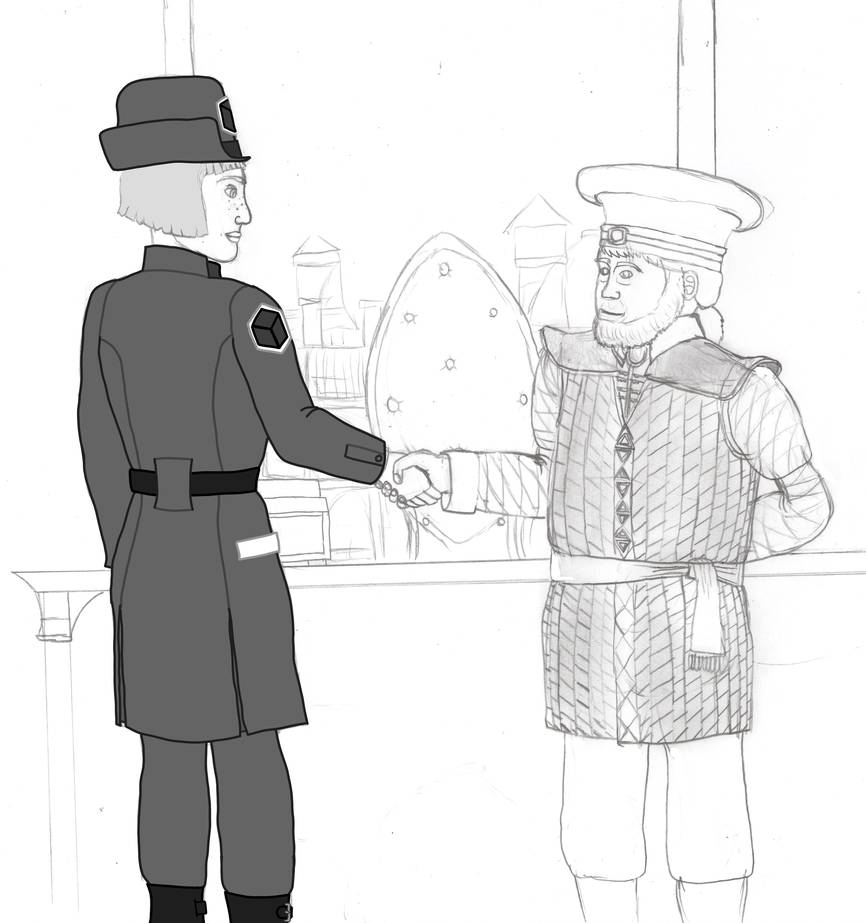 (Southeastern Continent, Late Autumn 47 IA)
(Southeastern Continent, Late Autumn 47 IA)
On a warm morning in Velnariath a train rolled across the red landscape past a field of
Vyankaillin gathering the day's sunlight. In most respects it was a fairly modest affair set to a narrow gauge* with twenty small ore wagons that were pulled along at a modest 27 kph by a small 0-4-2
Valcas-type numbered J-211. Over the last decade, House Valcas had build hundreds of Locomotives for various jobs for buyers in Valnothron and beyond and for the most part J-211 was a fairly normal for one of their small mine units. It's marine engine derived piston assembly was a bit of an anachronism nowadays as Valcas' steamworks had stopped putting them on mainline locomotives seven years ago though they still put them on the lighter units. It's cabin was open with just a simple cloth awning for shade, but this was a concession to climate. But the thing that most people noticed as odd about it was it's lack of a smokestack.
Eventually the vehicle began to slow. As it did so it's Drow operator let out a sigh, he'd hoped that he'd have enough power left to make it to his next stop but that was not likely. He'd cut the steam and applied the breaks gradually bringing the train to a complete stop as per protocol. In truth he'd figured that he could do it on the move but the Governor had been firm on not taking risks. Once the vehicle was still, he opened up a set of clamps and extracted a metal cylinder banded with runic steel and full of glass. He set the heavy thing aside as he opened up a small steel box and produced another identical Cylinder save a Green Glow from it's runes. He put the spent cylinder in the box and with care hefted the fresh one into place facing into what would be the Firebox on most locomotives and fiddled with a nob on it's back and it's rear rune ring to engage it. Soon afterwards the steam pressure began to rise again and he was back under way. With a smile on his face, the driver set his vehicle back into motion
Torthirn zi'Valcas had been taken by House Valcas as a ward thirteen years ago. He was sent to the Ironworks and after some basic instruction was tasked with keeping the cannon foundry's boring engines in working order during the Escort War. Soon after he was poached by Weitas ti'Halsath for her locomotive and after two years of that he was shunted overseas to work on the locomotives of the the Zharhys line to help operate the machines he'd built. Then two years ago he'd been transferred again to the far side of the world to man this short line. Eleven miles from the minehead to the colony's Ironworks and back again three to five times a day. Bringing over overseers, food, water, tools, various other supplies and bringing back a vast amount of metal, with drop offs for crews working the solar collectors.
Velnariath was still a rough and tumble mining colony in the desert, but despite that Torthirn liked his job. It was fairly easy but still stimulating, much better than any prospect he had back in Valnothron, especially as there were plans for a proper full sized railway. Beyond that the land had a stark beauty to it and the wildlife was strange and wonderful. A couple months ago he'd met Breijeth, a shopkeeper with a beautiful smile and the right sense of humour who found him handsome. He could see the two of them building a nice house by the river with a couple of domestics to keep it nice and tend to the children while they our out taming this frontier and building a key part in achieving the Divine Destiny of global Drow Domination. More than most, he had firsthand experience of this. Using a six vaul Sun Flask, J-211 could go down the line thrice with a bit to spare before it needed to be swapped out. No need to carry a tender full of coal, nor ash and smut getting everywhere and once they were spent, they could be put back in the Vyankaill for recharging.
He'd heard that the Coldlanders went around the world for Stone Oil that they distilled into fuel, as far as Torthirn was concerned they could keep it.
*Three drow feet, or 93cm
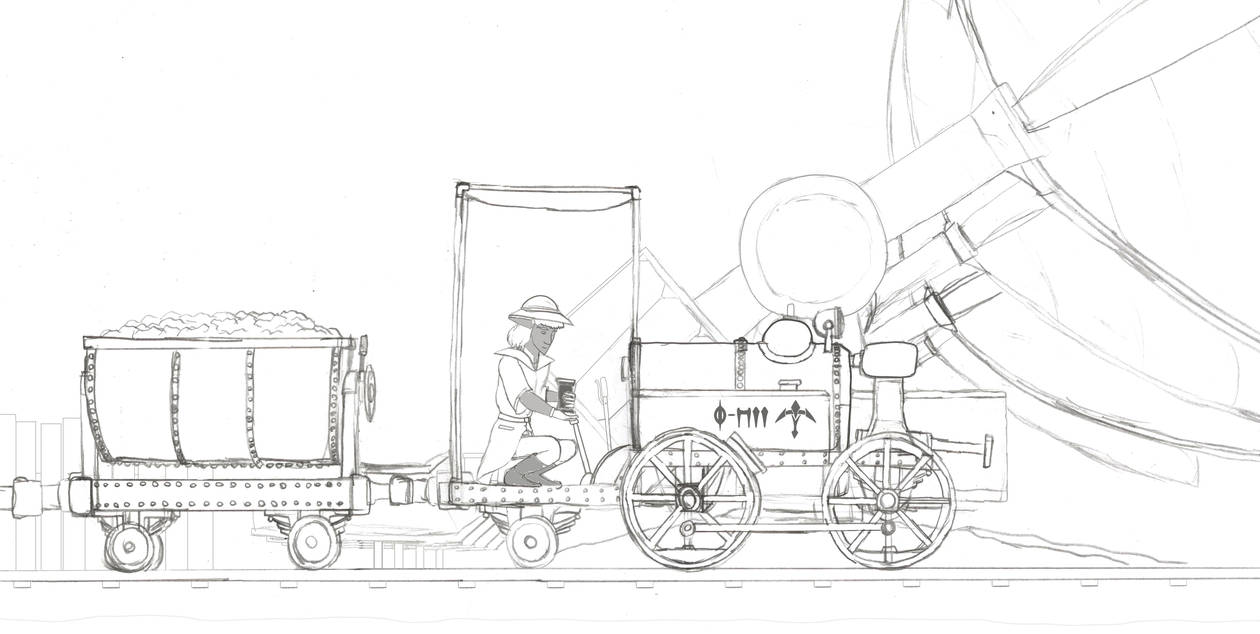 (Tamanota Shoguante, Early Winter 47 IA)
(Tamanota Shoguante, Early Winter 47 IA)
As the sun crept over the the horizon fishermen loaded their boats with nets and other supplies. Potters threw clay on their wheels and began to work it and carpenters carefully began to work wood, the two families of inn keepers prepared a quick breakfasts of tea, rice, grilled fish and preserved vegetables for their guests. Servants cleaned dishes and set laundry out, old women swept up, a couple men helped out a friend replace lost roof tiles, a few peasants peddled firewood, a pair of samurai made their police rounds, other people went about their business at a relaxed pace and children played. In general it was a calm winter morning in the small town of Isuban. It's people treading their well worn paths at a relaxed pace. Not much happened in these towns between market days and festivals. Broadly speaking there was some interest goings on beyond their small island elsewhere in the Shogunate, sailors and merchants could find interested ears in the Sake Houses. Reports of smoke spewing iron ships sailing to Kaniwan bearing clockwork treasures for the Tamanota clan and the Emperor had come their way and some of the Samurai had acquired some rather impressive new firearms but to the people of Isuban that was interesting but not important like the rice harvest or the price of pickled herring. One more fantastic tale with a grain of truth in it that only marginally effected their lives.
Then the bell-tower was wrung with three rapid clangs followed by a short break and the sequence repeating. It could only mean one thing, an attack from the sea. A few men rushed to the town armoury for armour and weapons while most set up barricades as Samurai took command. The two battlements were manned and their eight cannons readied. A rider dispatched to the fortress for aide as peasants from nearby farmsteads poured in. The people of Isuban had faced raids before and had fought off the last two incursions. Typically the assault could be furious but brief. They would not have the numbers nor the stomach for casualties for a sustained siege especially when reinforcements arrived. Most likely they'd content themselves with rounding up straggling peasants and other unfortunates to be outside the town walls they could. In general the populace thought that if they could hold out for a few hours, they'd be safe.
Then they saw the force coming their way. Not a trio of ships, but a dozen. Worse still was their armament. At long range they brought their guns to bear and fired off ragged broadsides into the battlements. Many shots went stray (which could mean anything from landing in the sea or crashing into someone's house) and a good number of them exploded. A couple of cannons returned fire, but soon enough they were silenced. The fleet advanced, dropped anchor off the shore more than forty boats loaded with raiders. The defenders shot at these with what guns they had, but the raiders had more both more faster firing rifles to return fire. They also had swivel guns, which they used against barricades. Firing a half-vaul projectile they could smash through the makeshift barriers, but the raiders were sparing with them. Indiscriminate slaughter ran counter to their purpose.
The landing parties attacked in three groups: one head on and the other two taking the flanks. Hundreds of men disembarked and were soon sallying forth letting out a cacophony of cheers, jeers and individual battle-cries as they went. Some threw grenades, others came in with revolving pistols and swords and most charged with bayonets fixed letting off the odd shot as they went. A few fell or were wounded in their assault, but sheer numbers and firepower were on their side. The west side of the town was the first to fall with the centre holding on for a few more minutes and the west lasting a bit longer. The defenders fell back, but by that point there were already raiders moving through the town and searching for plunder and victims.
One of the invaders advanced through a streets at a quick pace, his Failverth 4255 rifles at the ready and his eyes darting back and forth. Ahead of him he saw a couple of armed men round a corner, he quickly levelled his gun and pulled the trigger. There was the flash, a sudden slam of recoil, the loud crack and a jet of smoke. A second latter he saw that he'd taken down a Samurai with what looked like (and latter turned out to be) a modern Coldland gun.
"Great shoot Arok! AAAARGH!" One Krai Pahyhan said as he ran past with revolver in hand quickly switching to a battlecry. Arok grinned at that as he reloaded to take out some of the armed peasant defenders he had with him. He'd take the rifle as a trophy, but the real prize was to come.
Soon the Tahajemitan raiders had the village under their control with parties scouring the surrounding countryside. Five thousand people were gathered from in and around Isuban and the surrounding village and the selection progress had begun. For the most part they took people between about six and forty, leaving aside the disabled few that were badly wounded and with a handful of older skilled artisans included. The old were seen as depreciated in value and while infants and young children had a lot of life in them they had a high attrition rate at sea. In total, some 2,814 people were loaded up onto the slave ship as well as a fair deal of plunder; from money to food, art, kegs of sake, clocks, porcelain, shrine ornaments, weapons and tools. Anything that looked like it had some value to them that they could was stolen. The armoury was burned and the powder magazines for the guns were blown up. After a few brutal hours the raiders left and headed back south. Between death and abduction, some 3,782 people were lost from Isuban and it's environs that day. More would succumb to their wounds over the new month.
Isuban was one of four towns on the Island of Takijima, part of the Southwestern chain of Higato. On that day, three of them were hit by nearly simultaneous attacks. Well armed and well coordinated, the incursion made off with 9,281 people as well as three trade ships while leaving another 3,405 dead. Nearly an eighth of the total population was gone and a blow which would immiserate the remainder. In total this incursion had taken more Higatoan lives than the minor raids had done in the last four. Worst still, a month latter another island was subject to raid of similar size from Ilong and two month after that a Zturimi fleet laid siege to the western coat of Nanbushu, the main Tamanota islands. Each did similar damage, though a Tamanotan light squadron did manage to take a couple of ships during the last raid and liberated four hundred captives at the price of a lost ship and 150 dead sailors and soldiers.
From the perspective of both the Southeastern Raiders and their Drow backers this venture was a major success. The large-scale raids brought back higher than normal returns with lower losses even before the operation was subsidized. Janilonas' high council got full slave markets, sales for their arms merchants, improved relationships and such a move would keep Higato on the defensive. It would take a bit of time before another set of major raids could be organized, but that meant they could prepare.
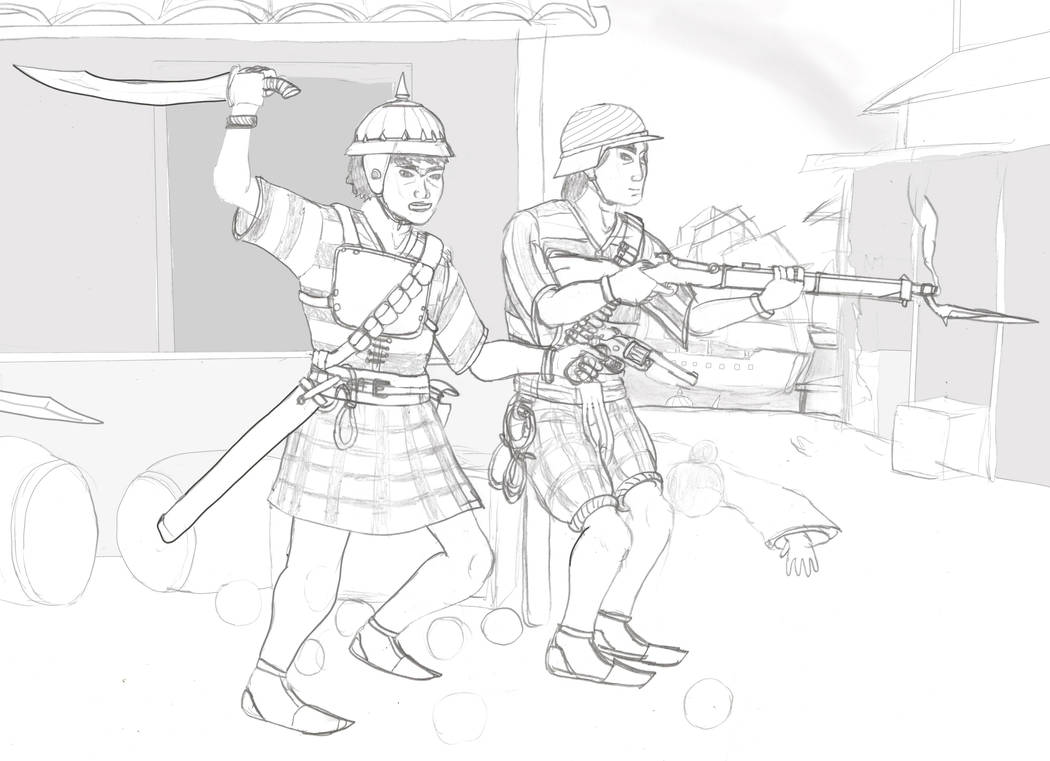

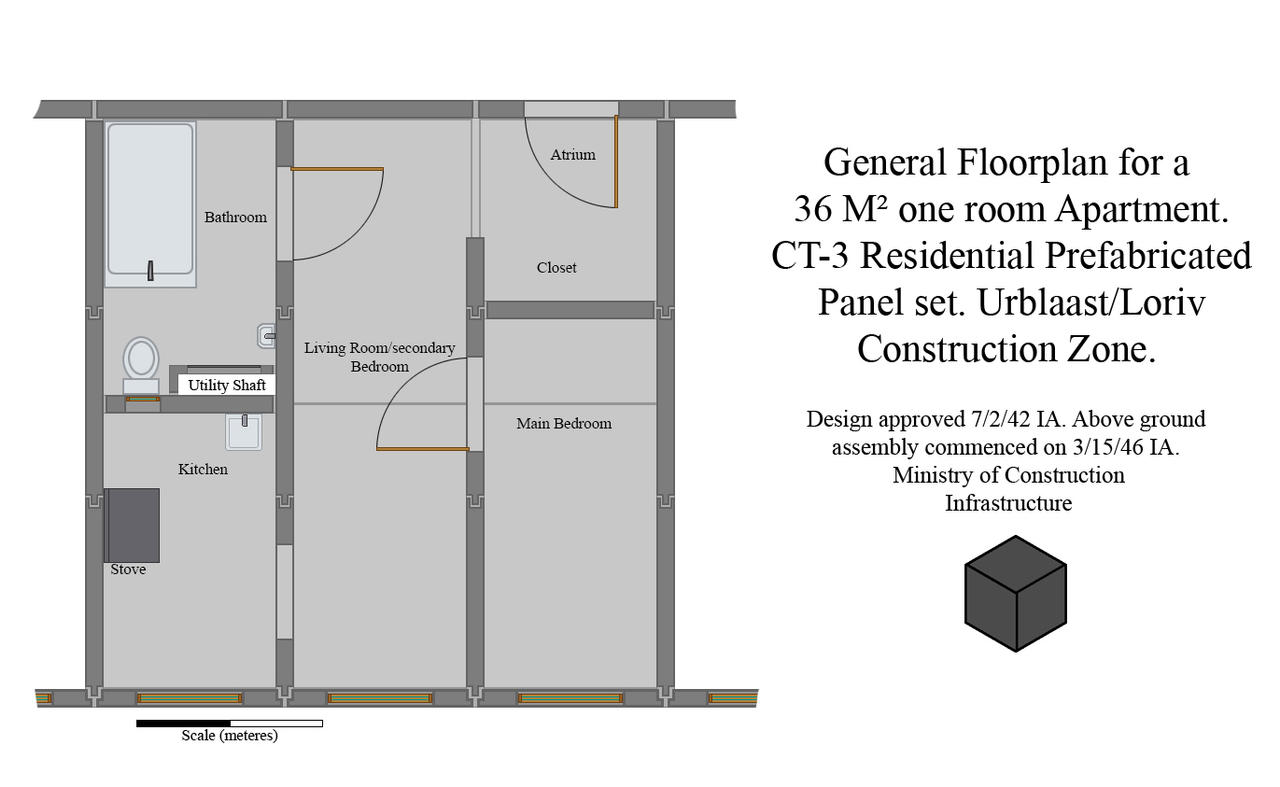 [/CENTER]
[/CENTER]